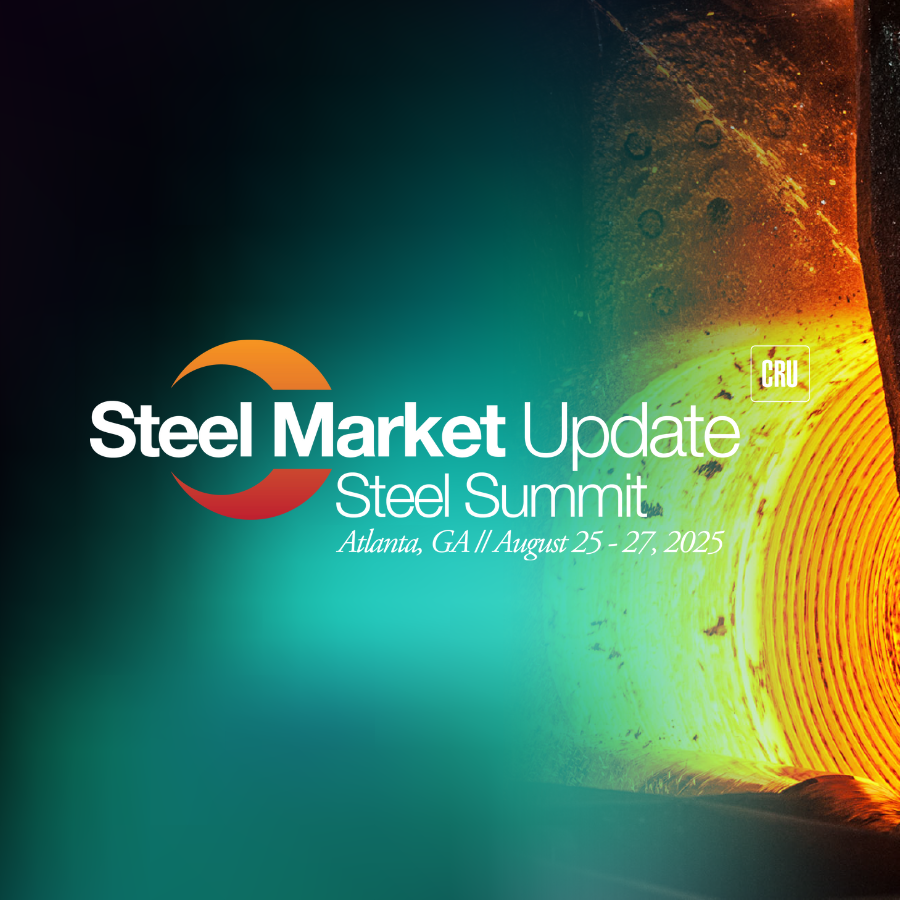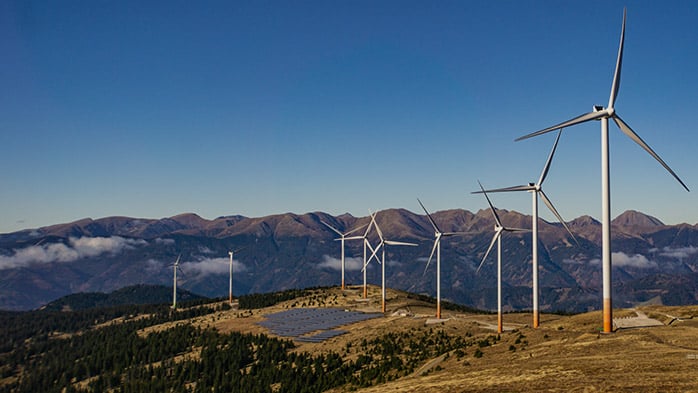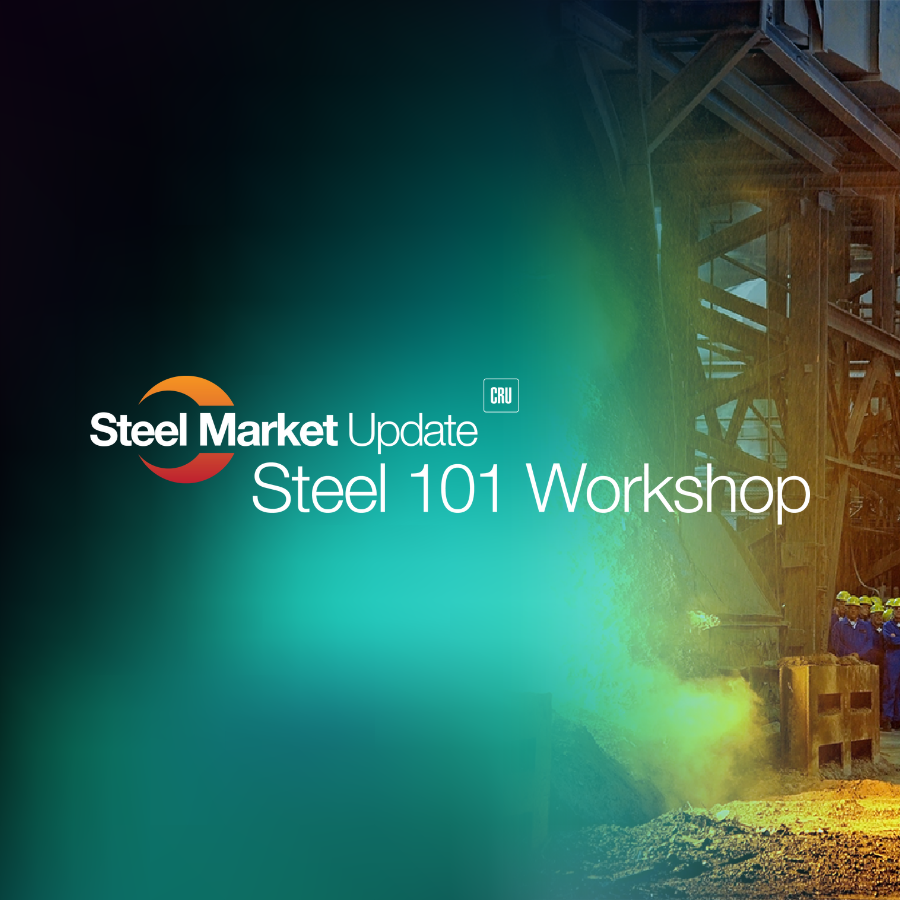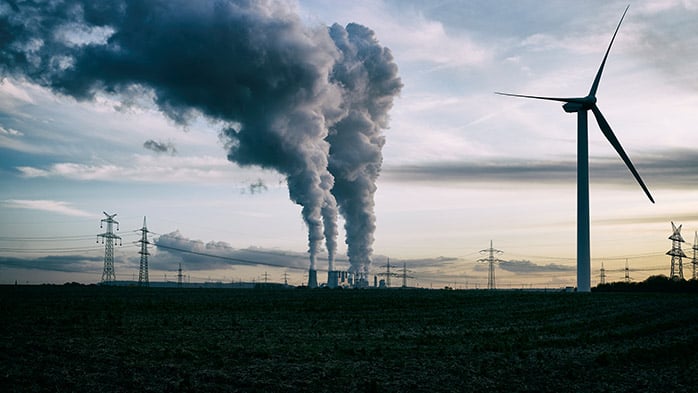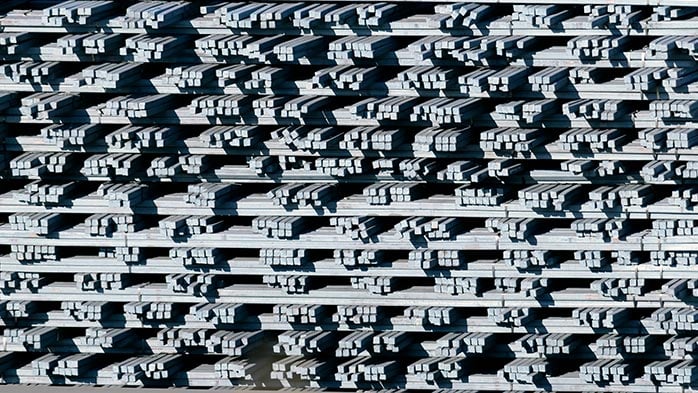The European steel industry in crisis again? Sure enough, the industry is currently facing a perfect storm of collapsing demand, prices and high iron ore costs.
This will naturally be attracting our clients’ time and resources. But it is especially important in such downcycles to take a strategic view of the future and anticipate structural change. Underlying pressures from global excess supply and low-cost international competition continue. However, as outlined in this Insight, European steel’s underlying comparative advantage is increasingly being shaped by carbon policies: since 2018, on average, carbon costs as a share of marginal production costs of EU steel mills has more than tripled. CRU Consulting provide insightful, data-driven advice to producers, investors and governments seeking to understand and address fundamental questions regarding their industries, portfolios and investment strategies as the energy transition gathers momentum.
EU carbon prices are holding up despite cyclical pressures
Europe’s carbon market has remained firmer than many other commodity markets so far since the onset of Covid-19. At the beginning of May 2020, the price of emitting a tonne of CO2 in the EU Emissions Trading Scheme (ETS) stands at €20 down from a peak of around €23 when the Covid-19 crisis emerged in March. This contrasts markedly with trends observed during the Global Financial Crisis (GFC) when the carbon price crashed by around 2/3rds as permits were sold off to generate cash for industrial and power producers.
Why are carbon prices more stable? On the face of it, this may appear surprising. EU industrial production is set to fall by more than 7 percent in Q2 2020 – a similar rate of contraction to the depths of the GFC crisis in early 2009 – reducing the demand for CO2 allowances (and thus the implied stringency of the total emissions limit, or ‘cap’). Moreover, gas prices have fallen to historical lows of around US$2.0/MMBtu, reducing the cost of substitution away from coal fired power production (although recognising that thermal coal prices have fallen substantially also). The answer is mostly due to policy.
Today, the ETS is far more established, having been extended to cover new gases (such as nitrous oxides) and sectors, including aviation. This increases its liquidity, reducing volatility. Moreover, the new Market Stability Reserve (MSR) – a mechanism to ensure that any temporary surplus of allowances is held “off market” to prevent a price crash – and the expectation of an ever stricter cap in the next Phase (IV) of the scheme starting in 2021 incentivises firms to save rather than sell any spare allowances. This further limits downward price pressures (see here for further discussion of the new ETS policy rules).
European steel producers are struggling
The EU steel industry is facing a perfect storm of collapsing demand, prices and high iron ore costs. The deep slowdown in manufacturing following European lockdown measures have caused the idling of furnaces across all the major integrated producers. Despite overall hot metal production in Europe having fallen by 28% since mid-March, excess supply persists and is bearing down on prices: Italian HRC prices have declined by ~ €15/t since January. At the same time, iron ore prices remain doggedly high at over $80/t holding production costs firm (indeed, collapsing freight rates are keeping FOB prices in Brazilian elevated, placing European steel producers at a competitive disadvantage relative to Asian producers). As a result, Europe’s mills are expected to plunge further into the red: CRU Steel Cost Review identifies negative and deteriorating average (notional) EBITA margins in Europe during H1 2020.
Just another cycle? Why carbon matters more this time
The European steel industry in crisis again? This is nothing new, we hear you say. Sure enough, collapsing industrial demand and downward pressure on prices is a feature of many previous cycles. More the backdrop of global excess supply and low-cost international competition continuing, and is being supported by shifting foreign exchange prices (low freight rates also place European steel producers at a competitive disadvantage relative to Asian producers). So as steel producers and investors alike struggle to cope with highly adverse market conditions, what’s new?
Short term cash management and cost control issues remain key tactical issues for steel producers currently. However, the most successful businesses remain agile and anticipate structural change amid “noisy” market signals. This means that it is critical to identify and understand the structural sources of comparative advantage that will exist in the post Covid-19 “end state”. Examining the data reveals the growing role that carbon policy is playing in steel industry financials.
The EU ETS continues to reduce profitability in the steel sector and incentivises curbs in production, exacerbating the impacts of the current cycle. Perhaps more importantly, though, carbon pricing will decisively shape any recovery: since 2018, on average, carbon costs as a share of marginal production costs of EU steel mills (assuming the full cost of carbon falls on the marginal tonne) has more than tripled to around 8 percent (Scope 1 emissions only), materially influencing investment and capacity decisions. CRU Consulting forecast this influence will further increase with further rises in carbon prices (see here).
Adapting to the road ahead is critical
Steel producers will need to address fundamental questions regarding their portfolios and investment strategies. Relative competitiveness among EU producers is shifting given the wide divergence in emissions intensity of European steel production. CRU’s analysis for example shows that, on average, the lowest carbon producers emit just 3 percent of direct emissions (EAF producers emit substantially less CO2 even when those from electricity are accounted for) of those in highest emitting decile.
This raises major concerns over the portfolios of some producers in Europe. In a separate Insight, CRU Consulting find that traditional measures of competitive analysis which fail to incorporate the potential impacts of future carbon pricing are likely to result in sub optimal risk capital and debt allocation due to a future reordering of the competitive positioning of assets and firms (see here for details).
Importantly, rising long term carbon prices will increasingly favour those producers adopting lower carbon technologies (such as EAF and hydrogen or carbon capture and storage). Associated shifts in consumer and investor preferences will likely also reward companies which clearly articulate medium-term goals for emissions reduction, supported by clear implementation and investment plans. This will likely require deeper cooperation with policy makers to ensure sufficient incentives and support for undertaking such capital investment programmes at a time of weak profitability and broader structural industry challenges.
What does the future hold for my business?
The market is tough right now, and there are many calls on our client’s time and resources. But its especially important in such downcycles to take a strategic view of the future and anticipate major structural changes such as those relating to decarbonisation. But determining both longer term strategic objectives and, especially, the pathway to their achievement is challenging. Moreover, expectations among finance, governments and end users are high and rising. It will no longer be sufficient to set long term targets and goals without clear interim markers and implementation plans. Determining the appropriate pathway will raise challenging questions. For example, is an incremental approach to improving the carbon intensity of integrated plants desirable? Or are producers better served with a dramatic reduction in emissions by switching to break through technologies?
CRU Consulting continues to provide detailed advice on the challenges and opportunities associated with decarbonisation technology choices in the steel industry (see, for example here). We have deep expertise in supporting our market leading clients in forming and adopting implementable action plans. For example, we help define and evaluate detailed scenarios in order to understand the implications of key uncertainties (including in relation to future market and technological conditions). Our risk specialists actively help clients to value the very different levels of flexibility which are implied by different investment and technology route maps.
CRU Consulting are also actively involved in both shaping and helping clients to understand the implications of future policies, including on the critical question of whether the EU will use carbon border tariff adjustments to “level the international playing field”, where we are on the cutting edge of scenario-based evaluation of different policy implementation choices (these are outlined here). Our emerging analysis finds that carbon border tariffs could have broad and fundamental impacts on the market, but have quite widely varying impacts across segments, assets and players, under different policy implementation rules.




